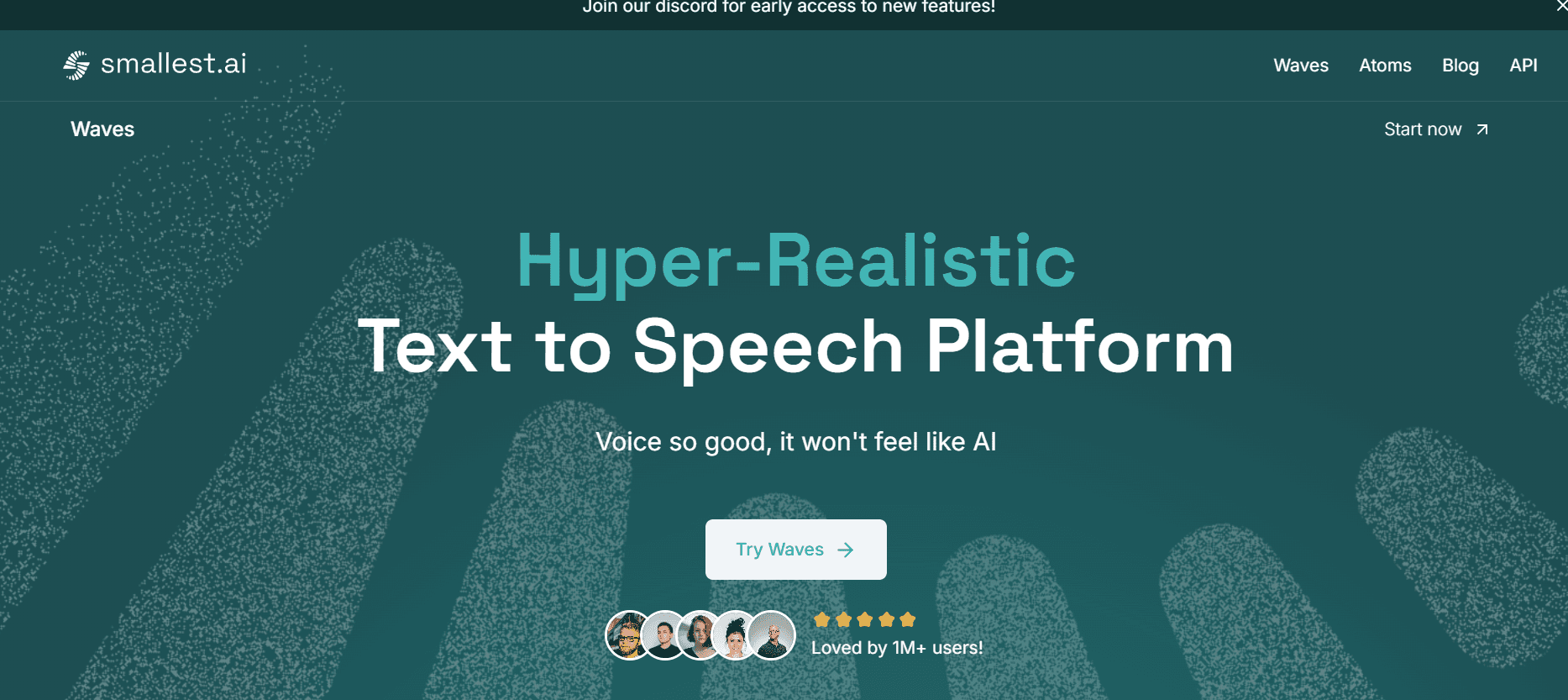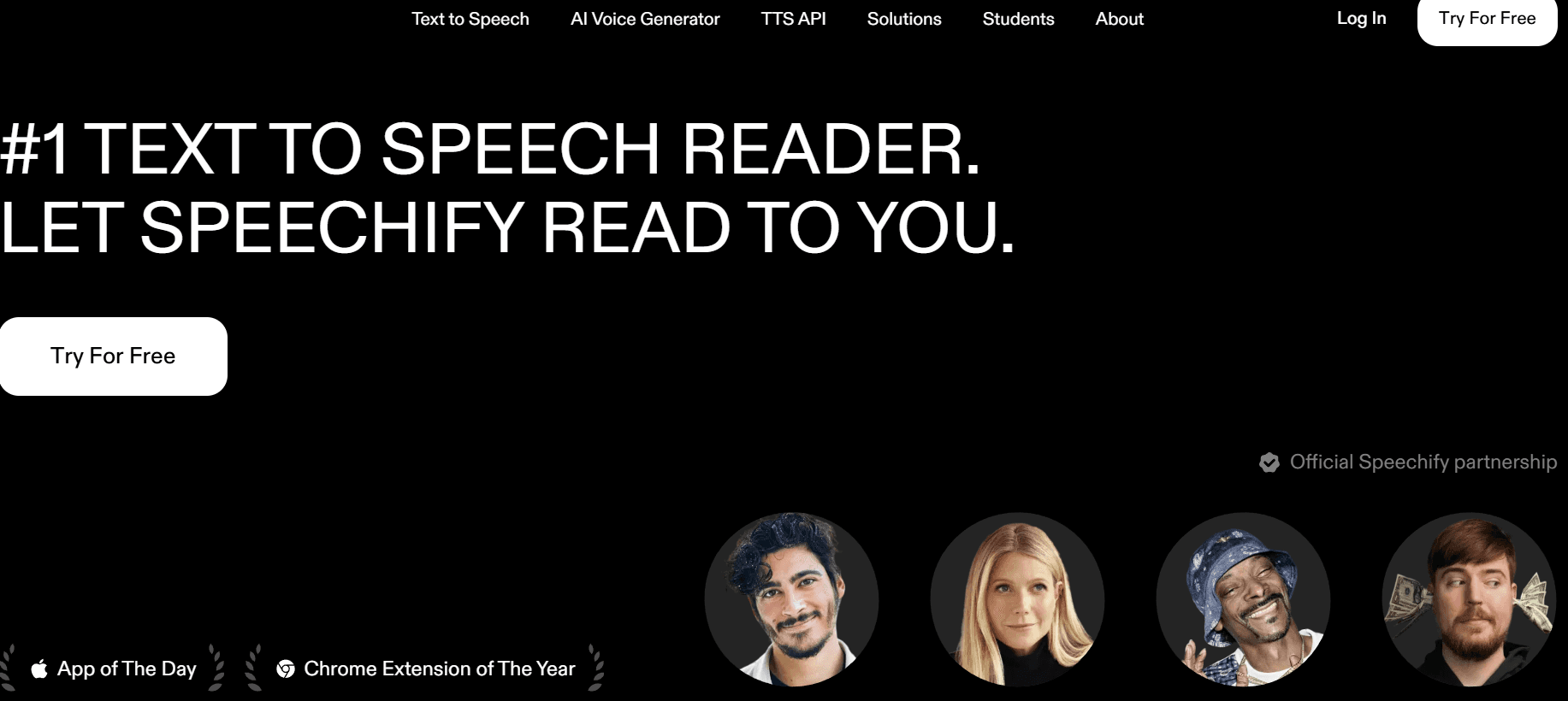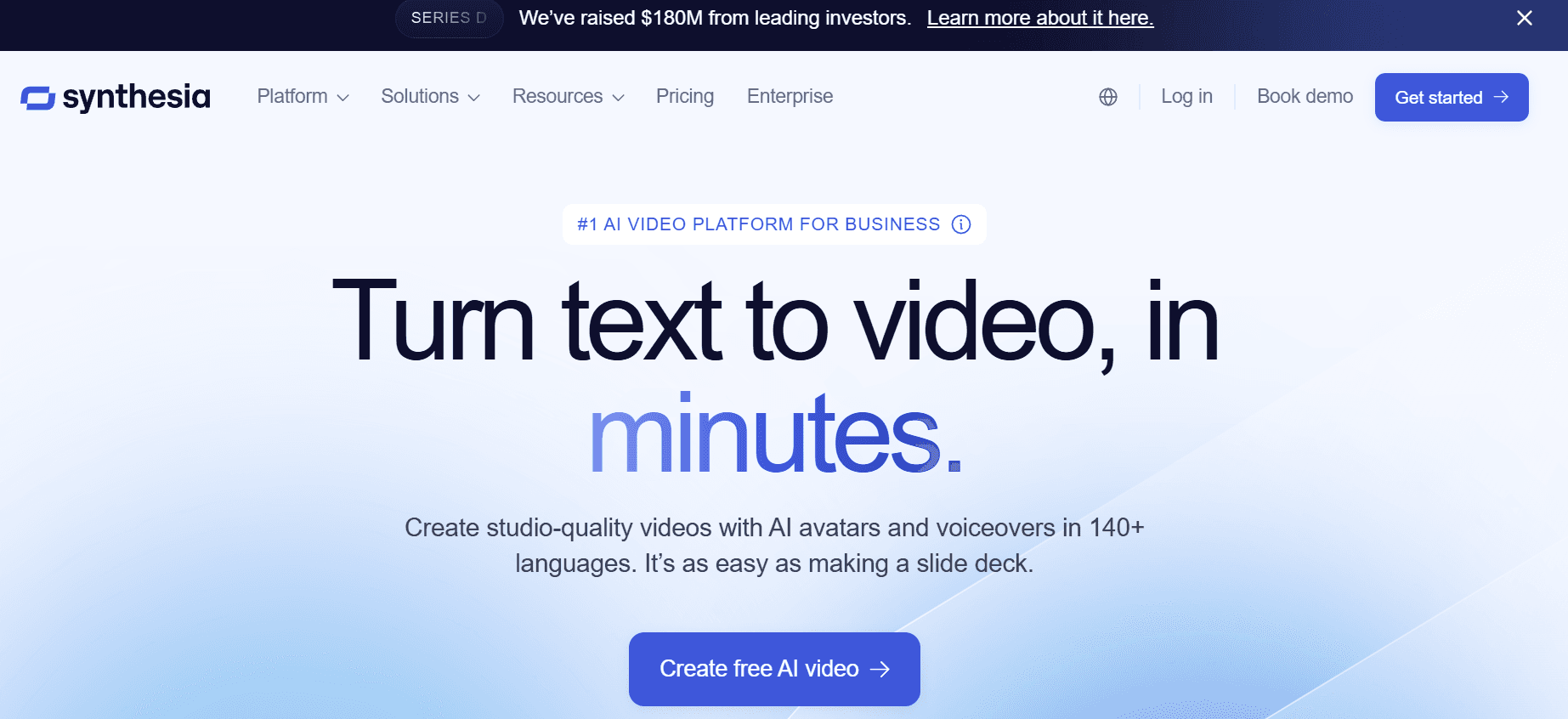Speech-to-Text and Text-to-Speech Technology: Making Interactions Smarter
How can you effortlessly convert speech into text and generate lifelike AI voices? Discover powerful tools that make tasks easy. Check out the details!

Akshat Mandloi
Updated on
December 26, 2025 at 11:36 AM
Ever wondered how your phone understands your voice or how AI assistants respond so naturally? From voice-controlled assistants like Siri and Alexa to automated transcription services, speech-to-text and text-to-speech (TTS) technologies are transforming the way we interact with machines. These innovations make life more convenient, improve accessibility, and open up endless possibilities for businesses and developers.
But how exactly do these technologies work? And how can you utilize them to enhance user experiences? Well, In 2022, the global voice recognition technology market was valued at approximately $12 billion and is projected to reach nearly $50 billion by 2029, reflecting a Compound Annual Growth Rate (CAGR) of around 21.2%.
While the global TTS market is expected to grow from $4.0 billion in 2024 to $7.6 billion by 2029, with a CAGR of 13.7% during this period.
This article explores speech-to-text conversion and text-to-speech generation using advanced tools, helping you discover the power of voice-based AI.
What is Speech-to-Text Technology?
Speech-to-text is the process of converting spoken words into written text. It plays a crucial role in various applications, including.
Voice assistants like Google Assistant and Alexa
Automated transcription services for podcasts and meetings
Voice commands for hands-free control of devices
Accessibility tools for individuals with disabilities
By seamlessly converting speech into text, businesses and individuals can improve efficiency, accessibility, and communication. Also, this technology not only enhances productivity but also opens up new possibilities for better interaction and understanding. Now, let's explore the key benefits of speech-to-text technology.
Key Benefits of Speech-to-Text Technology
Speech-to-text technology enhances accessibility and efficiency across various industries. Key applications include.
Customer Service & Call Centers – AI-powered agents transcribe customer interactions for better analysis and response.
Healthcare & Telemedicine – AI-driven speech recognition assists in patient consultations and medical documentation.
Content Creation & Media: Journalists, podcasters, and video creators streamline their workflow with automatic transcription.
Transcription Services: Automates the conversion of audio recordings into text, streamlining documentation.
Virtual Assistants: Powers AI assistants like Siri, Google Assistant, and Alexa to process voice commands for tasks such as reminders and smart home control.
Accessibility Tools: Assists individuals with disabilities by enabling voice-based interaction with devices, improving communication and accessibility.
Smart Home Automation: Allows users to control devices through voice commands, improving convenience and efficiency.
Supporting Individuals with Disabilities: Reading text aloud to assist those with dyslexia and other reading challenges.
Voiceovers for Videos: Creating professional-grade voiceovers for YouTube videos, tutorials, and other multimedia content.
From enhancing customer service to empowering accessibility tools, speech-to-text technology has broad and impactful applications. Now, let’s take a closer look at how this powerful technology works behind the scenes.
How Does Speech-to-Text Technology Work?
Speech-to-text technology converts spoken language into written text using advanced algorithms and artificial intelligence. The process involves:
Audio Input: Capturing speech through microphones or other recording devices.
Preprocessing: Enhancing audio quality through noise reduction and volume normalization.
Phonetic Matching & Pattern Recognition: Identifying phonetic patterns using machine learning and AI.
Acoustic & Language Models: Understanding sound patterns, grammar, and sentence structures.
Natural Language Processing (NLP): Ensuring context-aware transcription by analyzing word relationships and semantics.
Machine Learning and AI: AI-driven systems continuously refine models to recognize diverse speech patterns and accents.
Modern voice-to-text systems continuously improve through machine learning, making them more accurate in recognizing diverse speech patterns, accents, and languages.
Factors to Consider When Selecting Speech-to-Text Software
Choosing the right speech-to-text software depends on accuracy, language support, and features tailored to your needs. Here are key factors to consider before making a decision.
Pricing: Compare free vs. premium plans based on usage needs.
Scalability: Ensure the tool can handle large transcription volumes.
Customization: Look for adjustable settings for better personalization.
Security & Compliance: Choose software that meets industry standards for data privacy.
Accuracy Guarantee: Choose tools with high transcription precision.
Multi-Language Support: Essential for translation and diverse language needs.
When selecting speech-to-text software, it's crucial to evaluate several factors that can significantly impact your experience and workflow. By considering pricing, scalability, customization options, security, and accuracy, you can ensure that the software aligns with your specific needs and goals.
What is Text-to-Speech Technology?
Text-to-speech technology converts written text into spoken words using AI-driven voice synthesis. This technology enables machines to read digital text aloud, creating natural-sounding speech for various applications.
TTS is widely used in:
Audiobooks and podcasts for seamless narration
AI-powered virtual assistants for interactive responses
Navigation systems that provide real-time voice directions
Accessibility tools that assist visually impaired users
By transforming written content into lifelike speech, TTS enhances user experience, improves accessibility, and enables automation in various industries. Now, let’s explore how Smallest.ai’s Waves takes text-to-speech to the next level with hyper-realistic AI voices.
Key Benefits of Text-to-Speech Technology
Text-to-speech (TTS) technology is widely used across industries to enhance accessibility, automation, and user engagement.
Media & Content Creation – Generates voiceovers for audiobooks, podcasts, and videos.
Education & E-Learning – Enhances learning with engaging, voice-based content.
Customer Support – Powers AI-driven voice assistants for efficient interactions.
Healthcare & Accessibility – Assists visually impaired users by converting text to speech.
Smart Devices – Enables voice interactions in smart home and IoT systems.
TTS technology enhances accessibility and user experience across industries. Looking for Advanced AI TTS technology? Try Waves by Smallest.ai. It offers real-time speech generation, multi-language support, and instant voice cloning, making it ideal for applications like podcasts, customer service, and media creation. Get started today for lifelike, expressive voices!
How Does Text-to-Speech Technology Work?
AI text-to-speech (TTS) models function on deep neural networks and machine learning technology to transform written text into human-like speech. By learning from vast datasets of voice recordings, these models can replicate speech in various languages, accents, and tones. Once trained, the AI uses this knowledge to produce lifelike voices that sound remarkably human. Here's how the process unfolds:
Front-End Processing
The process begins with the user inputting text and selecting preferences like language and tone. The system then breaks down the text into words and phonetic transcriptions. It further divides the text into smaller chunks, such as phrases or sentences, to ensure the generated speech flows naturally.
Back-End Processing
In the back end, the AI utilizes models to analyze the text and generate speech. It segments the text into fragments, processes linguistic nuances, and adjusts speech patterns to make the output sound more human-like, enhancing fluency and interactivity.
Conversion to Speech
Once processed, the system converts the text into speech by generating key features like pitch, rhythm, and intonation. These features are combined to create clear, natural-sounding audio with smooth timing and realistic flow.
Voice Output
Finally, the voice output is generated by a vocoder network, which turns the processed features into audio. The system allows for adjustments in volume, pitch, and speed, providing flexibility to tailor the voice to different needs.
Now, let’s explore the top 5 TTS platforms leading the way with advanced AI.
List of 5: Best Text To Speech Software
Text-to-speech (TTS) software is transforming how we consume written content by converting text into natural-sounding speech. Whether you’re creating content, improving accessibility, or enhancing productivity, the right TTS tool can make a significant difference. Here’s a list of the 5 best TTS software for all your needs.
Wave by Smallest.ai

Source: smallest.ai
Waves by Smallest.ai is a game-changing text-to-speech (TTS) platform that lets you create stunningly realistic AI voices in any accent, language, or emotional tone— all in real-time. With its hyper-realistic and emotionally rich speech synthesis, Waves brings your content to life, making it perfect for audiobooks, podcasts, video voiceovers, and so much more.
Key Features:
Realistic AI Voice Synthesis – Produces studio-quality speech with emotional depth.
Multi-Language & Accent Support – Over 30+ languages and 100+ accents available.
Low Latency Processing – Real-time voice generation with sub-100ms latency.
Instant Voice Cloning – Create personalized AI voices with just 5 seconds of audio input.
Customizable Parameters – Adjust speed, pitch, and tone for different applications.
Pricing: Smallest.ai’s plans include a Free option with 30 minutes of TTS, a $5/month Basic Plan with 3 hours and API access, and a $29/month Premium Plan with 24 hours, enhanced API, and voice cloning.
Speechify

Source: Speechify
Speechify is a versatile text-to-speech (TTS) tool designed to convert written content into natural-sounding speech. It is accessible on iOS, Android, and as a Chrome extension. The app features advanced AI voice generation, making it ideal for enhancing productivity and accessibility. With support for multiple languages, Speechify is a great choice for users across the globe.
Key Features:
Versatile TTS Solution: Converts text from web pages, emails, and documents into spoken words.
Cross-Device Syncing: Start listening on one device and pick up where you left off on another.
Lifelike AI Voices: Provides realistic speech generation for an enhanced listening experience.
Customizable Voice Options: The premium plan offers additional voices and advanced features.
Pricing: Free Version with basic features and limited voices and functionality. While premium plan starts at $7.99/month for access to advanced features, including additional voices and customization options.
3. Murf AI

Source: Murfi.ai website
Murf AI is a leading AI-powered text-to-speech platform that offers realistic voiceovers with advanced customization options. This platform lets users adjust pitch, speed, emphasis, and pronunciation, making it an ideal platform for content creation, e-learning, and business applications.
Key Features:
Voice Quality: Delivers high-quality, natural-sounding AI voices with clear intonation and emotional depth for a lifelike listening experience.
AI Voices: Choose from 120+ AI voices in 20+ languages, including a variety of tones, accents, and styles for diverse content creation.
User-Friendly Interface: Murf’s intuitive drag-and-drop interface makes voiceover creation easy, requiring little to no training.
Customizable Pitch & Speed: Fine-tune pitch, speed, volume, pronunciation, and emphasis for a more personalized voice output.
Flexible Pricing: Murf AI offers flexible pricing plans to suit different needs. The Business plan starts at $29/month, providing access to premium features and voices, while the Enterprise plan offers custom solutions starting at $99/month.
4. Synthesia

Source: Synthesis website
Synthesia is an advanced platform that harnesses AI text-to-speech technology to convert your text into engaging video content with virtual avatars. Instead of simply hearing text, you can create dynamic videos where avatars present your script. With its user-friendly interface and cloud-based functionality, Synthesia doesn't strain your device's resources.
Key Features:
Supports 140+ languages and accents for a global audience.
Converts text into fully narrated videos with AI avatars.
Offers a variety of pre-set avatars or the option to create a custom avatar.
Intuitive interface requires no video editing skills.
Branding and customization options allow for personalized content.
Pricing: Synthesia offers a flexible starter pack at $18/month, for a creator at $64/month, and custom-tailored rates for enterprises.
5. Podcastle

Source: Podcastle Website
Podcastle is an intuitive AI-powered platform that makes high-quality text-to-speech conversion simple and fast. Whether you're creating podcasts, audiobooks, or voiceovers, Podcastle's TTS feature turns written text into realistic, natural-sounding speech in seconds.
It is designed for both beginners and professionals, Podcastle stands out with its additional AI-driven tools, offering a complete solution for content creators that goes beyond just TTS.
Key Features:
Converts written content into lifelike speech using AI.
Multi-track audio editor with an intuitive drag-and-drop interface.
AI voice cloning creates a digital replica of your voice for seamless content creation.
Pricing: Get the monthly subscription at $14.99/month or an annual plan at $11.99/month.
Conclusion
Speech-to-text and text-to-speech technologies have become essential tools across various industries, enhancing communication, accessibility, and productivity. From AI assistants and transcription services to media production and educational applications, these technologies are reshaping how we interact with digital content.
Choosing the right tools can significantly impact performance and user experience. As voice-based applications continue to grow, investing in reliable and efficient TTS and STT tools will help you stay ahead in an increasingly voice-driven world.
Waves by Smallest.ai leads the way with ultra-realistic, real-time voice synthesis. Whether you're a content creator looking to streamline narration or a business aiming to improve customer interactions, these tools open up exciting possibilities. Ready to experience lifelike, real-time text-to-speech performance? Try Waves by Smallest.ai today and elevate your voice-based applications with high-quality, expressive AI-generated speech.
Frequently Asked Questions (FAQs)
What is the difference between speech-to-text and text-to-speech technology?
Speech-to-text (STT) converts spoken language into written text, often used in transcription services, virtual assistants, and accessibility tools. Text-to-speech (TTS), on the other hand, transforms written text into spoken words, providing voice output for applications like audiobooks, navigation systems, and virtual assistants.
How accurate are modern speech-to-text tools?
Modern STT tools powered by AI and machine learning can achieve up to 95%+ accuracy, depending on the audio quality, background noise, and the tool used. Tools like Google Speech-to-Text and Otter.ai continue to improve their performance with more training data.
Which industries benefit the most from text-to-speech technology?
Text-to-speech technology benefits industries such as media and content creation, education and e-learning, customer service, healthcare, and smart home automation. It's particularly impactful in enhancing accessibility for visually impaired users.
Can text-to-speech software read different languages and accents?
Yes, many advanced TTS platforms, including Waves by Smallest.ai and Speechify, support multiple languages and accents. These systems utilize phoneme-based input for more accurate pronunciation and quicker adaptation to new languages.
Is it possible to use TTS software for content creation like podcasts and videos?
Absolutely! Tools like Waves by Smallest.ai and Podcastle offer high-quality, natural-sounding voices perfect for podcasts, audiobooks, YouTube videos, and more. They help content creators save time and reduce costs associated with traditional voiceover production.
How does text-to-speech improve accessibility?
TTS software enhances accessibility by converting written content into speech, aiding visually impaired users, individuals with dyslexia, and those with learning disabilities. It empowers these individuals to engage with content independently.
Ever wondered how your phone understands your voice or how AI assistants respond so naturally? From voice-controlled assistants like Siri and Alexa to automated transcription services, speech-to-text and text-to-speech (TTS) technologies are transforming the way we interact with machines. These innovations make life more convenient, improve accessibility, and open up endless possibilities for businesses and developers.
But how exactly do these technologies work? And how can you utilize them to enhance user experiences? Well, In 2022, the global voice recognition technology market was valued at approximately $12 billion and is projected to reach nearly $50 billion by 2029, reflecting a Compound Annual Growth Rate (CAGR) of around 21.2%.
While the global TTS market is expected to grow from $4.0 billion in 2024 to $7.6 billion by 2029, with a CAGR of 13.7% during this period.
This article explores speech-to-text conversion and text-to-speech generation using advanced tools, helping you discover the power of voice-based AI.
What is Speech-to-Text Technology?
Speech-to-text is the process of converting spoken words into written text. It plays a crucial role in various applications, including.
Voice assistants like Google Assistant and Alexa
Automated transcription services for podcasts and meetings
Voice commands for hands-free control of devices
Accessibility tools for individuals with disabilities
By seamlessly converting speech into text, businesses and individuals can improve efficiency, accessibility, and communication. Also, this technology not only enhances productivity but also opens up new possibilities for better interaction and understanding. Now, let's explore the key benefits of speech-to-text technology.
Key Benefits of Speech-to-Text Technology
Speech-to-text technology enhances accessibility and efficiency across various industries. Key applications include.
Customer Service & Call Centers – AI-powered agents transcribe customer interactions for better analysis and response.
Healthcare & Telemedicine – AI-driven speech recognition assists in patient consultations and medical documentation.
Content Creation & Media: Journalists, podcasters, and video creators streamline their workflow with automatic transcription.
Transcription Services: Automates the conversion of audio recordings into text, streamlining documentation.
Virtual Assistants: Powers AI assistants like Siri, Google Assistant, and Alexa to process voice commands for tasks such as reminders and smart home control.
Accessibility Tools: Assists individuals with disabilities by enabling voice-based interaction with devices, improving communication and accessibility.
Smart Home Automation: Allows users to control devices through voice commands, improving convenience and efficiency.
Supporting Individuals with Disabilities: Reading text aloud to assist those with dyslexia and other reading challenges.
Voiceovers for Videos: Creating professional-grade voiceovers for YouTube videos, tutorials, and other multimedia content.
From enhancing customer service to empowering accessibility tools, speech-to-text technology has broad and impactful applications. Now, let’s take a closer look at how this powerful technology works behind the scenes.
How Does Speech-to-Text Technology Work?
Speech-to-text technology converts spoken language into written text using advanced algorithms and artificial intelligence. The process involves:
Audio Input: Capturing speech through microphones or other recording devices.
Preprocessing: Enhancing audio quality through noise reduction and volume normalization.
Phonetic Matching & Pattern Recognition: Identifying phonetic patterns using machine learning and AI.
Acoustic & Language Models: Understanding sound patterns, grammar, and sentence structures.
Natural Language Processing (NLP): Ensuring context-aware transcription by analyzing word relationships and semantics.
Machine Learning and AI: AI-driven systems continuously refine models to recognize diverse speech patterns and accents.
Modern voice-to-text systems continuously improve through machine learning, making them more accurate in recognizing diverse speech patterns, accents, and languages.
Factors to Consider When Selecting Speech-to-Text Software
Choosing the right speech-to-text software depends on accuracy, language support, and features tailored to your needs. Here are key factors to consider before making a decision.
Pricing: Compare free vs. premium plans based on usage needs.
Scalability: Ensure the tool can handle large transcription volumes.
Customization: Look for adjustable settings for better personalization.
Security & Compliance: Choose software that meets industry standards for data privacy.
Accuracy Guarantee: Choose tools with high transcription precision.
Multi-Language Support: Essential for translation and diverse language needs.
When selecting speech-to-text software, it's crucial to evaluate several factors that can significantly impact your experience and workflow. By considering pricing, scalability, customization options, security, and accuracy, you can ensure that the software aligns with your specific needs and goals.
What is Text-to-Speech Technology?
Text-to-speech technology converts written text into spoken words using AI-driven voice synthesis. This technology enables machines to read digital text aloud, creating natural-sounding speech for various applications.
TTS is widely used in:
Audiobooks and podcasts for seamless narration
AI-powered virtual assistants for interactive responses
Navigation systems that provide real-time voice directions
Accessibility tools that assist visually impaired users
By transforming written content into lifelike speech, TTS enhances user experience, improves accessibility, and enables automation in various industries. Now, let’s explore how Smallest.ai’s Waves takes text-to-speech to the next level with hyper-realistic AI voices.
Key Benefits of Text-to-Speech Technology
Text-to-speech (TTS) technology is widely used across industries to enhance accessibility, automation, and user engagement.
Media & Content Creation – Generates voiceovers for audiobooks, podcasts, and videos.
Education & E-Learning – Enhances learning with engaging, voice-based content.
Customer Support – Powers AI-driven voice assistants for efficient interactions.
Healthcare & Accessibility – Assists visually impaired users by converting text to speech.
Smart Devices – Enables voice interactions in smart home and IoT systems.
TTS technology enhances accessibility and user experience across industries. Looking for Advanced AI TTS technology? Try Waves by Smallest.ai. It offers real-time speech generation, multi-language support, and instant voice cloning, making it ideal for applications like podcasts, customer service, and media creation. Get started today for lifelike, expressive voices!
How Does Text-to-Speech Technology Work?
AI text-to-speech (TTS) models function on deep neural networks and machine learning technology to transform written text into human-like speech. By learning from vast datasets of voice recordings, these models can replicate speech in various languages, accents, and tones. Once trained, the AI uses this knowledge to produce lifelike voices that sound remarkably human. Here's how the process unfolds:
The process begins with the user inputting text and selecting preferences like language and tone. The system then breaks down the text into words and phonetic transcriptions. It further divides the text into smaller chunks, such as phrases or sentences, to ensure the generated speech flows naturally.
In the back end, the AI utilizes models to analyze the text and generate speech. It segments the text into fragments, processes linguistic nuances, and adjusts speech patterns to make the output sound more human-like, enhancing fluency and interactivity.
Once processed, the system converts the text into speech by generating key features like pitch, rhythm, and intonation. These features are combined to create clear, natural-sounding audio with smooth timing and realistic flow.
Finally, the voice output is generated by a vocoder network, which turns the processed features into audio. The system allows for adjustments in volume, pitch, and speed, providing flexibility to tailor the voice to different needs.
Now, let’s explore the top 5 TTS platforms leading the way with advanced AI.
List of 5: Best Text To Speech Software
Text-to-speech (TTS) software is transforming how we consume written content by converting text into natural-sounding speech. Whether you’re creating content, improving accessibility, or enhancing productivity, the right TTS tool can make a significant difference. Here’s a list of the 5 best TTS software for all your needs.

Source: smallest.ai
Waves by Smallest.ai is a game-changing text-to-speech (TTS) platform that lets you create stunningly realistic AI voices in any accent, language, or emotional tone— all in real-time. With its hyper-realistic and emotionally rich speech synthesis, Waves brings your content to life, making it perfect for audiobooks, podcasts, video voiceovers, and so much more.
Key Features:
Realistic AI Voice Synthesis – Produces studio-quality speech with emotional depth.
Multi-Language & Accent Support – Over 30+ languages and 100+ accents available.
Low Latency Processing – Real-time voice generation with sub-100ms latency.
Instant Voice Cloning – Create personalized AI voices with just 5 seconds of audio input.
Customizable Parameters – Adjust speed, pitch, and tone for different applications.
Pricing: Smallest.ai’s plans include a Free option with 30 minutes of TTS, a $5/month Basic Plan with 3 hours and API access, and a $29/month Premium Plan with 24 hours, enhanced API, and voice cloning.

Source: Speechify
Speechify is a versatile text-to-speech (TTS) tool designed to convert written content into natural-sounding speech. It is accessible on iOS, Android, and as a Chrome extension. The app features advanced AI voice generation, making it ideal for enhancing productivity and accessibility. With support for multiple languages, Speechify is a great choice for users across the globe.
Key Features:
Versatile TTS Solution: Converts text from web pages, emails, and documents into spoken words.
Cross-Device Syncing: Start listening on one device and pick up where you left off on another.
Lifelike AI Voices: Provides realistic speech generation for an enhanced listening experience.
Customizable Voice Options: The premium plan offers additional voices and advanced features.
Pricing: Free Version with basic features and limited voices and functionality. While premium plan starts at $7.99/month for access to advanced features, including additional voices and customization options.
3. Murf AI

Source: Murfi.ai website
Murf AI is a leading AI-powered text-to-speech platform that offers realistic voiceovers with advanced customization options. This platform lets users adjust pitch, speed, emphasis, and pronunciation, making it an ideal platform for content creation, e-learning, and business applications.
Key Features:
Voice Quality: Delivers high-quality, natural-sounding AI voices with clear intonation and emotional depth for a lifelike listening experience.
AI Voices: Choose from 120+ AI voices in 20+ languages, including a variety of tones, accents, and styles for diverse content creation.
User-Friendly Interface: Murf’s intuitive drag-and-drop interface makes voiceover creation easy, requiring little to no training.
Customizable Pitch & Speed: Fine-tune pitch, speed, volume, pronunciation, and emphasis for a more personalized voice output.
Flexible Pricing: Murf AI offers flexible pricing plans to suit different needs. The Business plan starts at $29/month, providing access to premium features and voices, while the Enterprise plan offers custom solutions starting at $99/month.
4. Synthesia

Source: Synthesis website
Synthesia is an advanced platform that harnesses AI text-to-speech technology to convert your text into engaging video content with virtual avatars. Instead of simply hearing text, you can create dynamic videos where avatars present your script. With its user-friendly interface and cloud-based functionality, Synthesia doesn't strain your device's resources.
Key Features:
Supports 140+ languages and accents for a global audience.
Converts text into fully narrated videos with AI avatars.
Offers a variety of pre-set avatars or the option to create a custom avatar.
Intuitive interface requires no video editing skills.
Branding and customization options allow for personalized content.
Pricing: Synthesia offers a flexible starter pack at $18/month, for a creator at $64/month, and custom-tailored rates for enterprises.
5. Podcastle

Source: Podcastle Website
Podcastle is an intuitive AI-powered platform that makes high-quality text-to-speech conversion simple and fast. Whether you're creating podcasts, audiobooks, or voiceovers, Podcastle's TTS feature turns written text into realistic, natural-sounding speech in seconds.
It is designed for both beginners and professionals, Podcastle stands out with its additional AI-driven tools, offering a complete solution for content creators that goes beyond just TTS.
Key Features:
Converts written content into lifelike speech using AI.
Multi-track audio editor with an intuitive drag-and-drop interface.
AI voice cloning creates a digital replica of your voice for seamless content creation.
Pricing: Get the monthly subscription at $14.99/month or an annual plan at $11.99/month.
Conclusion
Speech-to-text and text-to-speech technologies have become essential tools across various industries, enhancing communication, accessibility, and productivity. From AI assistants and transcription services to media production and educational applications, these technologies are reshaping how we interact with digital content.
Choosing the right tools can significantly impact performance and user experience. As voice-based applications continue to grow, investing in reliable and efficient TTS and STT tools will help you stay ahead in an increasingly voice-driven world.
Waves by Smallest.ai leads the way with ultra-realistic, real-time voice synthesis. Whether you're a content creator looking to streamline narration or a business aiming to improve customer interactions, these tools open up exciting possibilities. Ready to experience lifelike, real-time text-to-speech performance? Try Waves by Smallest.ai today and elevate your voice-based applications with high-quality, expressive AI-generated speech.
Frequently Asked Questions (FAQs)
What is the difference between speech-to-text and text-to-speech technology?
Speech-to-text (STT) converts spoken language into written text, often used in transcription services, virtual assistants, and accessibility tools. Text-to-speech (TTS), on the other hand, transforms written text into spoken words, providing voice output for applications like audiobooks, navigation systems, and virtual assistants.
How accurate are modern speech-to-text tools?
Modern STT tools powered by AI and machine learning can achieve up to 95%+ accuracy, depending on the audio quality, background noise, and the tool used. Tools like Google Speech-to-Text and Otter.ai continue to improve their performance with more training data.
Which industries benefit the most from text-to-speech technology?
Text-to-speech technology benefits industries such as media and content creation, education and e-learning, customer service, healthcare, and smart home automation. It's particularly impactful in enhancing accessibility for visually impaired users.
Can text-to-speech software read different languages and accents?
Yes, many advanced TTS platforms, including Waves by Smallest.ai and Speechify, support multiple languages and accents. These systems utilize phoneme-based input for more accurate pronunciation and quicker adaptation to new languages.
Is it possible to use TTS software for content creation like podcasts and videos?
Absolutely! Tools like Waves by Smallest.ai and Podcastle offer high-quality, natural-sounding voices perfect for podcasts, audiobooks, YouTube videos, and more. They help content creators save time and reduce costs associated with traditional voiceover production.
How does text-to-speech improve accessibility?
TTS software enhances accessibility by converting written content into speech, aiding visually impaired users, individuals with dyslexia, and those with learning disabilities. It empowers these individuals to engage with content independently.
Related Blogs
Lead with Precision, Speak with Purpose: What Smallest.ai Shares with Emmanuel Macron
Nov 25, 2025
Conversational AI in Customer Service: 4 Use Cases And Steps
Dec 18, 2025
The Future of AI in Customer Service: What Comes Next
Dec 18, 2025
9 Ways Contact Center AI Is Changing Customer Calls Forever
Dec 18, 2025
How Generative AI in Financial Services is Defining 2025 ROI
Dec 18, 2025


